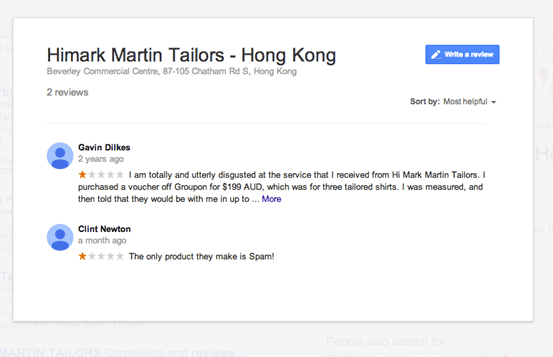Most in the profession would agree that personal referrals are by far the best way of attracting new patients to the practice.
Not only are referred patients already ‘sold’ on the service you provide and are therefore often a pleasure to treat, but there is no direct cost in attracting this new referred patient.
The number of new referred patients you receive each month is also one of the most obvious ways of reviewing the standard of service that you and your team are providing. But, before you start beating yourself up because the number of referrals you receive has decreased in the last year or so, be aware that almost every practice has seen a reduction in referrals and this is due mainly to an increase in the number of practicing dentists in society as a whole and therefore an increase competition. However, referrals are still a litmus test on the service you provide and one of the KPIs you should be monitoring every month.
The human aspect of a personal referral has not changed in decades and is hardly likely to change in the future. As much as we live in an electronic world, thank goodness we still manage to speak to one another occasionally. A mum at the school gate will still recommend your services to the other parents when the topic of dentistry comes up – so far, so good.
What has changed is what happens next: it used to be that the referred parent would find your number from White Pages or Directory Enquiries (remember them?) and give you a call. This no longer happens as people simply Google you from their Smartphone or maybe when they get back in front of their computer. Before the prevalence of the Internet, chances are the person who was referred to you would become a patient. They may ask a question or two over the phone, but generally they were calling to book an appointment. Today however, what they find on the Internet is going to influence their decision, and online reviews are now a major contributing factor when converting personal referrals and indeed all the other online traffic that encounters your Internet presence.
I recently took on a new client who, on the face of it, was making a fantastic job of their marketing without my help. A Smartphone-friendly website, top in Google through SEO and a strong PPC campaign with Re-Marketing was part of this, but they were simply not getting the sort of new patient enquiry numbers they were expecting. On the face of it, the only thing that was missing from their on-line strategy was compelling video content which we are now creating for them.
A two minute search revealed the problem – they had been slammed on Google Reviews four years earlier and had a 2.4 star rating out of five, plus highly defamatory comments which had not been responded to. Once these issues had been rectified, patient enquires were restored to an acceptable number.
The public now have a lot of choice and dental waiting lists are a thing of the past, so no matter whether a patient has been referred or whether they find you from a Google search, if they read words like ‘rip off’, ‘pain’, ‘unnecessary treatment’ or ‘rude’ – they are going to give you a wide berth. Equally, if they see a 4.8 star rating and read words like ‘delightful’, ‘painless’, ‘great value’ and ‘friendly’ they are going to flock to your door.
Conclusion: Online Reviews, in particular Google Reviews, are either your best friend or your worst enemy.
So, what is the best way of managing your online reputation?
The starting point is to find out what is currently on the internet about you. So do a search on your practice name, your name and any other phrase you are known by. This should be done on Google primarily, but also repeat this on Bing and Yahoo as the results are often very different.
Write down or take a screen shot of what comes up. Then put these notes into two categories – 1. Reviews and 2. Listings. With this second category, give one of your internet-savvy team members the job of making sure all these listings are up to date with the correct address, contact numbers and domain name. Make sure they write down all the usernames and passwords for these sites in a book so making future updates will be easy. Cleaning up these sites will very often involve getting in touch with the directory site to ‘claim’ or ‘edit’ listed information and to set up usernames and passwords. Each of these sites will try and sell you an upgraded listing and I urge you not to succumb to these sales pitches. There is no need to rush this process and if you were to update one directory listing per week you would soon have them all up to date.
The first category, Reviews, is far more important. The main review site I want you to consider is Google itself as any Google review linked to your Google Map listing is going to get seen first. This is what you are looking for:
What you find will fall into three categories
(a) really positive reviews
(b) some negative reviews
(c) no reviews at all
If you have a positive review and you didn’t know, then that’s great. Review what they have said and if they are recent and you know the patient, then you might want to post a response: “Thanks Jill, it is always a pleasure looking after you and your kids”.
If you have negative reviews then it is essential to respond to these to combat their effect. Although their comments may upset you and quite possibly be untrue, never go on the attack. Make your response customer-service focused, clinical when necessary and try to highlight how you want others to see you. For instance, if the negative review was about cost, you might talk about quality: “John, I was so sad to hear you were not happy with the service you received. I do my level best to keep our fees fair and reasonable, however I also have a deep commitment to continual education for myself and the other doctors and the very latest in technology, which although hugely expensive, I believe provides our patients with the highest level of care”; “If you ever wish to come back to the practice, please let my team know we have had this chat as I would love to show you around the practice personally and explain things like our new Cone Beam and the benefits it brings – ta ke care, Dr Bill”.
Responding won’t increase your ‘star rating’ but it does put some perspective on the review and most intelligent people understand that you can’t please everyone all the time and that actually the review may also be fake.
If you have no reviews at all, then at least you have a blank canvas, but this is ambient and is not giving you any advantage.
I want to touch on another topic now – which is the question on the Dental Board’s mind – “Are reviews testimonials?” The answer is very clear; reviews are testimonials, so I would suggest that you do not publish any positive reviews on your website as that may contravene the Dental Board guidelines because you are in control over what goes on your own website. BUT the guidelines then go on to say: “There are a number of independent websites that invite public feedback/reviews about a patient’s experience…. A review is review is NOT considered to be a testimonial or purported testimonial…”
In short: You can’t put them on your website but you can have them on 3rd party sites such as Google.
I am not encouraging you to openly canvas your patients to write positive reviews about you, but I would say that a good review is worth far more to you than the bottle of wine a happy patient drops in.
I have talked a lot about Google Reviews as these are by far the most influential, but there are other review sites that are popular also, such as Yelp and WOMO (word of mouth). You need to approach these sites in a similar way, but remember if you are not on Google Maps and therefore don’t have a Google Review facility then this is very negative for your practice; people will not find you easily, interact with their smartphone GPS or be able to call you with a single click. But, if you are not on Yelp or WOMO then it is not such a big deal.
This is a complex and ever-changing area, but it can have both really positive or absolutely devastating effects on your practice, so it’s important and urgent that you get your head around it.
If you have never posted a Google Review I would suggest that you take time to tell your local Italian restaurant how great their Penne alla Arrabiata is, so you get to know the process. I have created a set of easy-to-follow instructions to use, so if you want a copy of this please just send me an e-mail and I will forward it on to you. This is also my way of checking how many people read to the end of my articles. Also, if all of this seems really alien I would be delighted to answer any specific questions you might have. It is simply not fair that a few loud mouthed people can affect the efforts of hard working people, so it’s a bit of a hobby horse of mine and I’m happy to help in any way I can.
Carl
02 92111477
KPIs = Key Performance Indicators
SEO = Search Engine Optimisation
PPC = Pay Per Click Advertising (such as Google Ad and Facebook Ads)
Re-Marketing = displaying banner ads on other websites after someone has visited your site
PS. I recently decided I needed a new suit and on the same day received an e-newsletter saying I could have a handmade suit from a top Hong Kong tailor for less than a grand. A quick Google Search came up with the following – and I still need a new suit!



